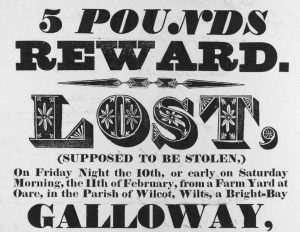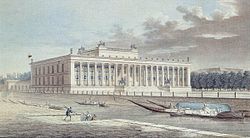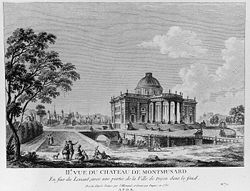No more Rococo!
1750-1850
Lecture Summary
This week’s lecture consisted of the on-going advancements of technology and art and design. It was James Watt’s invention of the steam engine that initiated the domino effect of the advancements in mass production, consumerism and advertising. With the invention of the steam engine, products became cheaper and available to the middle class, leading to more demand.

Watt Steam Engine
Advertising had also blown up during the industrial revolution because of the need to sell products that were mass produced. Type designers had explored new ways of expressing text. With the consumerist culture, they designed louder, larger typefaces such as the fat-face and modern style, to catch the eyes of different target audiences.

1832 reward poster for lost horse, from the John Soulby collection
Research: Neoclassical Design in Architecture
The Neoclassical movement began in the 18th century and its principles are still used in modern day buildings. The name derives from the act of drawing inspiration from “classical” forms of art and reiterating it to create a new unique style.

Thomas Hamilton’s design for the Royal High School, Edinburgh, 1831.

Altes Museum, built by Karl Friedrich Schinkel in Berlin.
Within this time period, the extravagant and ornamental architectural styles from the baroque period had greatly simmered down. Neoclassical architecture had emerged as a reaction against the excesses of the Rococo style. The characteristics of this style consisted of flat blank walls, columns, light motifs, and the use of simple geometric shapes. This greatly reflected architecture styles of Ancient Greek and Ancient Rome.

Château de Montmusard (1765), by Charles de Wailly.

Palladian revival: Stourhead House, designed by Colen Campbell and completed in 1720. The design is based on Palladio’s Villa Emo.
Sources
https://www.khanacademy.org/humanities/monarchy-enlightenment/neo-classicism/a/neoclassicism-an-introduction
https://en.wikipedia.org/wiki/Neoclassical_architecture
https://fontsinuse.com/uses/5578/the-story-of-our-friend-the-fat-face